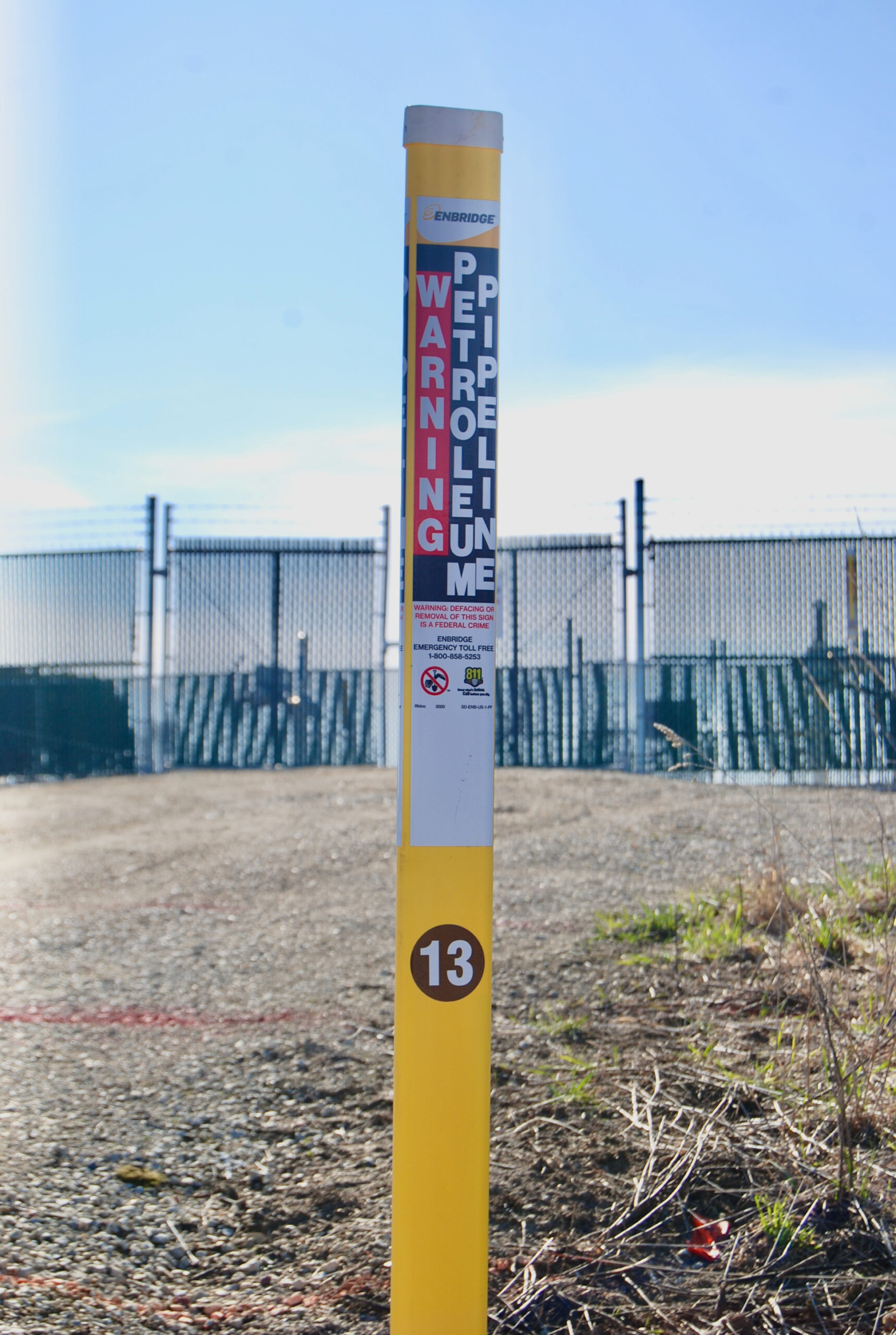By Kim McDarison
The Wisconsin Department of Natural Resources (DNR) Tuesday issued a “notice of violation” and has requested an “enforcement teleconference” with representatives of Enbridge, Inc., scheduled for May 17.
The notice and teleconference request come in response to what has been described as a 15-month lapse in time between when a “hazardous substance” was leaked at the Enbridge Line 13 Blackhawk Valve near Fort Atkinson and when it was reported to the Wisconsin DNR.
According to documents released by Enbridge and the DNR, a thinning agent, called “diluent,” leaked at the site in April of 2019. It was reported to the DNR in July of 2020.
The public became aware of inconsistencies concerning the amount of materials reported to have leaked, and the lapse of time between when the leak occurred and when it was reported, during meetings held by two separate committees — one in February and one in March — of the Jefferson County Board of Supervisors.
Responding to questions posed in a telephone interview by Fort Atkinson Online after the March committee meeting, South Central Region Team Supervisor of the DNR’s Remediation and Redevelopment Program Steve Martin noted that the department was evaluating criteria in place for the release of hazardous substances.
In the letter sent by the DNR to Enbridge on Tuesday, DNR Environmental Enforcement Specialist Emily Pedersen wrote that the DNR “has reason to believe that Enbridge Inc., and Enbridge Pipeline … LLC, are in violation of Wisconsin’s hazardous substance spill laws … at Enbridge Line 13 Blackhawk Valve located between Westphal Lane and Hartwig Lane on Blackhawk Island Road.”
The letter names Enbridge as the “responsible party,” further noting that a separate letter, defining the company as the “responsible party,” had been sent to the company by the department in August of 2020. As the responsible party, Tuesday’s letter stated, the company has “environmental obligations at the site.”
In the letter, the department alleges several violations, citing language in state statutes that reads: “Notice of Discharge. A person who possesses or controls a hazardous substance or who causes the discharge of a hazardous substance shall notify the department immediately of any discharge not exempted under sub.(9).”
Further language within state statutes cited by the department, reads: “Hazardous substance discharges shall be immediately reported to the department by telephoning the department-designated 24-hour hotline telephone number.”
The letter further alleges that on April 26, 2019, an alarm was reported to Enbridge and company representatives determined the presence of a leak that was associated with a control valve fitting on the pipeline. This led to a release of diluent, according to the letter.
In May of 2019, the letter continued, Enbridge conducted shallow soil sampling and installed temporary vapor monitoring probes.
“One shallow soil sample showed benzene greater than the department soil to groundwater pathway standard,” the letter stated. “Vapor monitoring probes detected Volatile Organic Compounds (VOCs),” the letter continued.
In 2019, the letter noted, Enbridge excavated approximately 250 cubic yards of contaminated soil which was placed in a licensed landfill.
“These volumes of impacted soil indicate a hazardous substance discharge had occurred,” the letter stated.
“Enbridge failed to report the hazardous substance discharge to the department until July 31, 2020,” the letter continued.
The letter next sets the teleconference date.
The letter further advises Enbridge that violations could be referred to the state Department of Justice to obtain a court-ordered compliance. Penalties could be set at as much as $5,000 per day for each day of violation, according to the letter.
In a statement released Friday to Fort Atkinson Online, Enbridge Communications Specialist Juli Kellner wrote the following:
“We have received notice from the Wisconsin Department of Natural Resources regarding its concern associated with a leak of light hydrocarbon on Line 13 near Fort Atkinson in 2019. We feel it’s important to share what took place and underscore that we have been and continue to work collaboratively with the DNR on reviewing and, as needed, improving our reporting processes.
“Initially the release was estimated at less than two gallons of light hydrocarbon, which we believed was below the federal and state reporting threshold. Light hydrocarbon is similar in nature to white gas or camping fuel used in a lantern or portable stove. It is used to blend with heavy crude petroleum to reduce its viscosity to make it ‘thinner’ and more efficient to transport by pipeline.
“Further investigation and continuing remediation over the past two years have resulted in a recalculation of the volume to be between 29 and 33 barrels. As we received more information from our ongoing work at the site, we have updated appropriate regulatory authorities, including the DNR.
“Enbridge has been actively working with the DNR on a supplemental site investigation. The release is contained within close proximity to the leak source. As an additional precaution, we have sampled residential wells in the area and lab results show no indications of hydrocarbon. Groundwater monitoring of the site is ongoing.
“Communication continues with community leaders and we are working with local landowners and the DNR as our response and remediation proceeds.”
Martin, responding to Fort Atkinson Online’s questions on Friday, said that DNR has also released a report following the collection of samples from potable wells within a quarter mile of the leak site, the last of which were taken on April 15.
The report stated that “no VOCs were detected at concentrations above the laboratory limit of detection in any of the potable wells sampled.”
At the conference, which is the next step in a process, Martin said, the DNR will present its information and look for a response from Enbridge.
In her letter, Pedersen described the teleconference as “an important opportunity to discuss the circumstances surrounding the alleged violations and to learn your (Enbridge’s) perspective on this matter.”
This post has already been read 2343 times!
